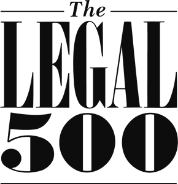A recent decision of the Securities and Futures Appeals Tribunal extends the definition of Type 10 (providing credit rating services) regulated activity beyond the ambit of traditional credit rating agencies. The decision may impinge the freedom of expression of market participants who, as part of their business, publish commentary on any aspect of public companies which may go to the creditworthiness of such companies, including corporate governance, business strategy, quality of earnings or quality of financial reporting. Equally, the decision may result in a wide range of investment analysts who are now licensed for Type 4 (advising on securities) being subject to a requirement to be licensed for Type 10 as well.
On July 11, 2011, Moody's Investors Service Hong Kong Limited ("Moody's") published a report entitled "Red Flags for Emerging Market Companies: A Focus on China". The report contained traditional credit ratings in respect of a number of Chinese companies as well as a red flag framework alongside those credit ratings. The red flag framework scrutinized weaknesses in 5 areas, namely corporate governance, business model, business strategy, quality of earnings and cash flow and quality of financial statements. Under the framework, companies with the greatest number of red flags were identified as "negative outliers".
The Securities and Futures Commission ("SFC") took issue with the red flags and, as Moody's was licensed for Type 10 (provision of credit rating services) regulated activity, disciplined Moody's on the basis that in preparing and publishing the red flags, Moody's had failed to meet the standards required of a licensed person. In this regard, the SFC said that Moody's lacked required procedural safeguards to ensure the integrity of the red flags and the red flag framework was misleading, confusing and inaccurate in a number of material respects. As a result, the SFC fined Moody’s HK$23 million.
Moody's disputed the SFC's disciplinary decision and appealed the decision to the Securities and Futures Appeals Tribunal ("SFAT"). Moody’s primary ground of appeal was that its publication of the red flags fell outside the scope of the regulated activity of providing credit rating services and thus, the SFC had no jurisdiction to discipline it on the basis of concerns as to the red flag analysis. The SFAT released its reasons for determination of the appeal on March 31, 2016, rejecting this ground of appeal.
APPLICABLE LAW
Under the Securities and Futures Ordinance ("SFO"), Type 10 regulated activity is "providing credit rating services", which means:
(a) preparing credit ratings:
(i) or dissemination to the public, whether in Hong Kong or elsewhere; or
(ii) with a reasonable expectation that they will be so disseminated; or
(b) preparing credit ratings:
(i) for distribution by subscription, whether in Hong Kong or elsewhere; or
(ii) with a reasonable expectation that they will be so distributed,
but does not include
(c) preparing, pursuant to a request made by a person, a credit rating which is exclusively prepared for, and provided to, the person and that is neither intended for dissemination to the public or distribution by subscription, whether in Hong Kong or elsewhere, nor reasonably expected to be so disseminated or distributed; or
(d) gathering, collating, disseminating or distributing information concerning the indebtedness or credit history of any person.
The SFO defines the term "credit ratings" as meaning "opinions, expressed using a defined ranking system, primarily regarding the creditworthiness of:
(a) a person other than an individual;
(b) debt securities;
(c) preferred securities; or
(d) an agreement to provide credit".
DECISION
The SFAT noted that the term "credit rating" is broadly defined and is not limited to credit ratings of the classic kind which are now globally accepted. It determined that a credit rating need not be limited to a rating of debt securities issued by corporate bodies but could extend to rating of corporate bodies themselves. In this regard, it emphasized that under the SFO, a "credit rating" is merely an opinion without limitation as to form other than that it be "expressed" using a "defined ranking system". It further noted that the term "defined ranking system" is not defined, may come in many forms and would include any system that divides its subject matter into ranks or classes that are clearly specified. Finally, it noted that the term "creditworthiness" is not limited in the types of factors that may be taken into account. Thus, while creditworthiness may take into account current and future ability to honour debt obligations, it need not necessarily do so.
On the basis of the foregoing, the SFAT found that the red flags were warning signs of potential credit risk in defined categories of risk. It further found that the red flags measured degree of risk based on the number of flags and that the red flag framework was of general application. In light of the foregoing, it found that the red flag framework "constituted a well-defined system or mechanism for judging levels of credit risk and, as such, constituted a credit rating."
ANALYSIS
The SFAT decision appears to extend significantly the scope of Type 10 regulated activity. Although the issue of freedom of expression was canvassed before the SFAT, it appears that the argument focused on whether Moody's freedom of expression would be unduly impinged by a broad construction of the ambit of Type 10. In fact, the more significant concern, which is not discussed in the decision, is the impact a broad construction will have on the freedom of expression of persons who are not regulated for Type 10. In our view, the SFAT construed the scope of Type 10 too broadly and failed to take into account the impact of so doing.
For example, following the decision it would appear now that a news organization that published a report on a number of public companies using a system to rank the financial soundness of those companies could now be carrying on a business in Type 10 regulated activity. No one would in the ordinary sense view the news organization as being in the business of providing credit rating services but, under the interpretation given by the SFAT, it seems that there is a real risk that the news organization would now need to be licensed to publish such a report. In this regard, the SFO provides no specific exemption for news media reports which fall within the ambit of Type 10.
Equally, for example, it would appear that investment analysts who are currently licensed for Type 4 (advising on securities) regulated activity may need to be licensed for Type 10 regulated activity if they include in their reports a system to rank companies based on criteria that would go to the financial soundness of these companies. Prior to the decision, it seems that such analysts would not have been regarded as carrying out a credit rating service and are not licensed therefore for Type 10 regulated activity. Again, in this regard, the SFO provides no specific exemption for persons licensed for Type 4.
If you found this article useful, you can find out more about our experience in this area by clicking on the following practice link(s): Advisory and Banking.












